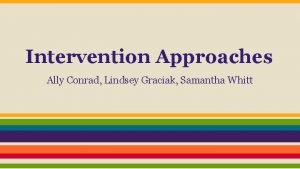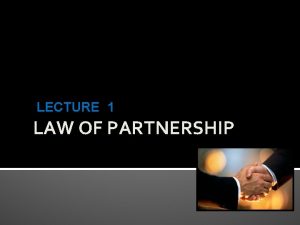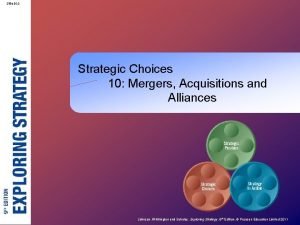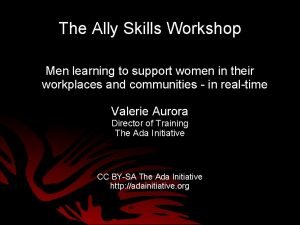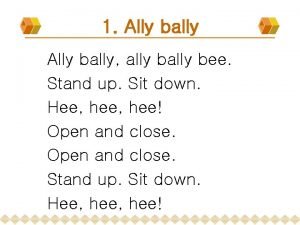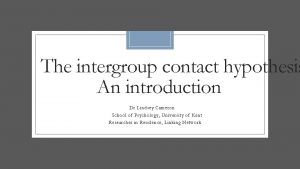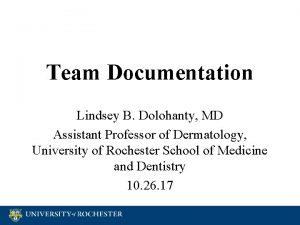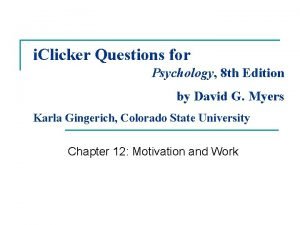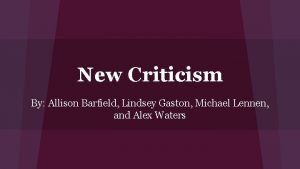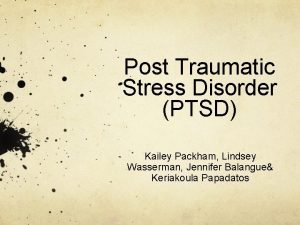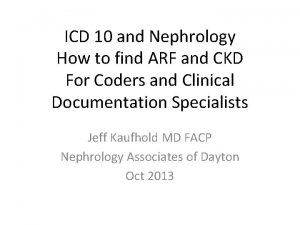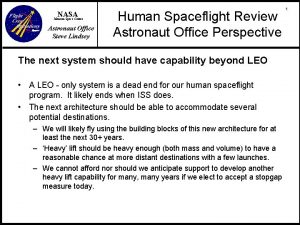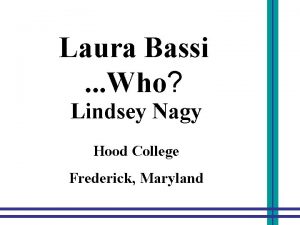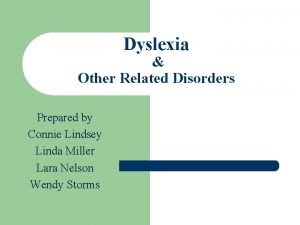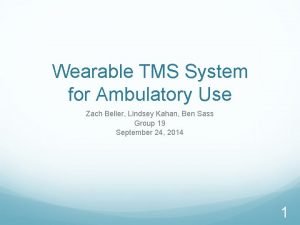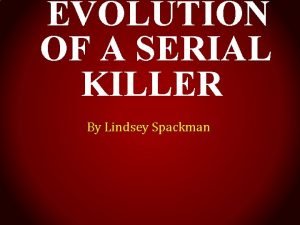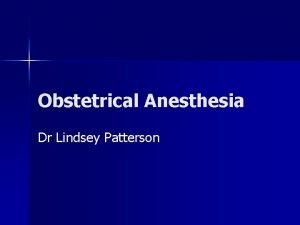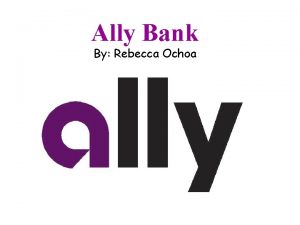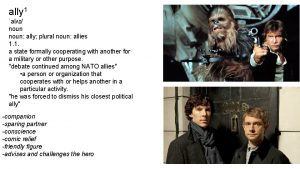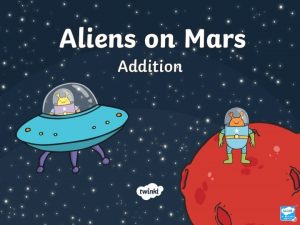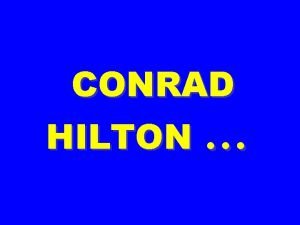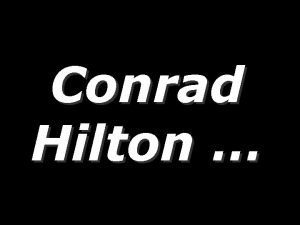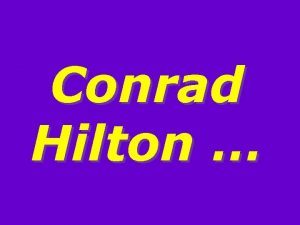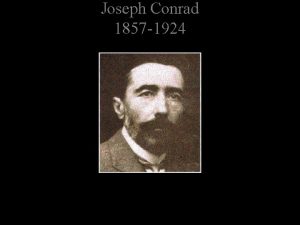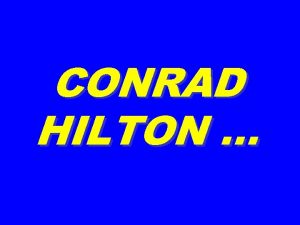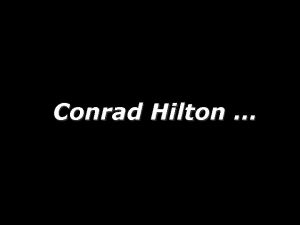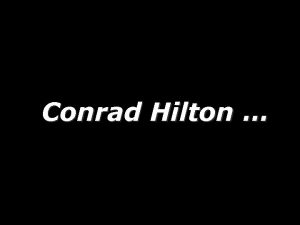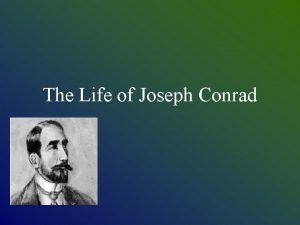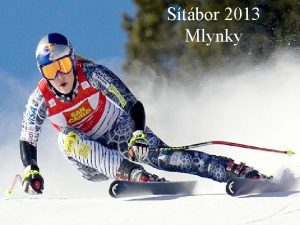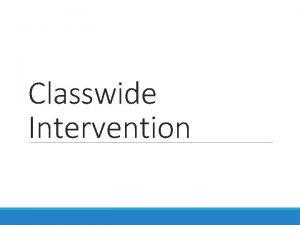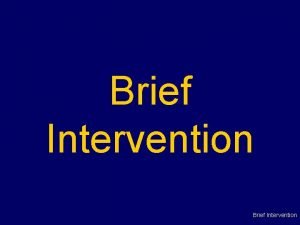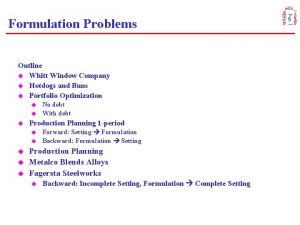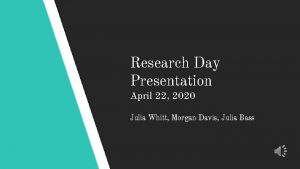Intervention Approaches Ally Conrad Lindsey Graciak Samantha Whitt






























- Slides: 30

Intervention Approaches Ally Conrad, Lindsey Graciak, Samantha Whitt

Discovery Learning an approach that emphasizes active learning, development of meaningful learning, and the subject’s attitudes and values towards oneself inquiry based instruction “learn by doing” “Learners are best educated when discovering facts about their world for themselves. ” subject solves problems on own from previous knowledge and past experiences

Discovery Learning- History Jerome Bruner (1960 s and 70 s) Early theorists: Piaget, Dewey, Vygotsky “Learners construct new ideas or concepts based upon existing knowledge. ” “Real learning takes place when students become problem solvers. ”

Discovery Learning- Theory of Instruction 1. curiosity and uncertainty- experience 2. structure of knowledge- must specify ways in which the body of knowledge should be structured (known to be most important) 3. sequencing- hands on concrete, visual representation, vocabulary and symbols, etc. 4. motivation- satisfied with ability to solve problems by receiving feedback from clinician or teacher

Discovery Learning- Population began as a target for children used in many classroom settings known to be used among adult population used in several companies nationwide for employee training (problem solve to build leadership, team effectiveness, project management, employee alignment, etc. ) can be used across most age groups (12 months+)

Discovery Learning-The Benefits 1. 2. 3. 4. 5. 6. active, engaging learning environment motivation promotes self and responsibility helps develop problem solving skills individual learning experience increases information retention

Discovery Learning- The Disadvantages 1. creation of cognitive overload 2. potential misconceptions 3. clinician may fail to detect problems or misconceptions (does not follow direct course content) 4. too much preparation

Discovery Learning- In Therapy ● The client would be asked to problem solve. Guided discovery learning would be used (clinician corrects and helps client reach a target behavior) if the client was having issues problem solving. ○ After guiding the client, the technique would evolve to pure discovery learning (the client discovers everything on his own). ● The therapy sessions would be client-based and focus on generalizing information into real-life situations.

Stimulus/Response Manipulation At the beginning of therapy, the clinician decides the level at which the client should begin. However, there are times when a client does not respond well and continue to progress. The clinician’s job is to recognize when this type of situation occurs and modify the task stimuli and/or response expected accordingly. Stimulus/Response Manipulation allows clinicians to adjust the difficulty of the treatment tasks by adjusting the stimulus used and/or the response expected from the client. This strategy ensures that the client does not become overwhelmed during treatment.

Stimulus Manipulation By manipulating the task stimuli, clinicians can change the mental effort needed to "perceive, discriminate, and interpret the task stimuli” according to the client’s needs.

Stimulus Manipulation ● Stimulus Manipulation can be achieved by adjusting the following of the stimuli: ○ Intensity ■ the “perceived strength of a stimulus”. (Ex. making the stimuli louder, brighter, and/or larger) ○ Salience ■ how clearly the stimulus stands out from the surrounding environment. ○ Clarity & Intelligibility ■ Making the stimuli more clear and distinguishable for the client. ■ Adults with TBI can have difficulty discriminating and/or interpreting unclear stimuli. ○ Redundancy ■ providing more information for a stimulus to further specify the target response. (Ex. “Show me the black marble” vs (increased redundancy) “I want you to show me the black marble that is small and round. Show me the small and round black marble. ” ○ Interest Value ■ Increase attention and comprehension by making the stimuli of more personal interest.

Response Manipulation Another way to make treatment task more accessible and not overwhelm the client is to manipulate the response expected from the individual.

Response Manipulation ● Responses can be manipulated by: ○ Reducing the length and complexity of the expected responses. ○ Making the responses more natural for the client by making the responses expected more meaningful and familiar. ○ Making the responses more redundant. ■ This can be done in two forms: within-response redundancy (client produces strings of words that have the same articulatory positions) and across-trials redundancy (some “characteristics of the client’s responses are the same from trial-to-trial”) ○ Allowing patients more time to respond.

AAC Defined Augmentative and Alternative Communication An area of clinical practice that attempts to compensate either temporarily or permanently for the impairment and disability patterns of individuals with severe and expressive communication disorders. Intervention methods includes all forms of communication (other than oral speech) that are used to express thoughts, needs, wants and ideas.

AAC Types Unaided: rely on user’s body to convey messages. includes gestures, facial expressions, body language, and/ sign language. Aided: require the use of tools and equipment in addition to the users body. can range from paper and pencil to communication books or boards to devices that produce voice output.

AAC Types The one I will be exploring in depth for my intervention is low-technology This does not require any kind of electronics anyone can make an LTAC device on their own Language within the devices is represented in different ways: single meaning pictures alphabet board semantic compaction

AAC Devices

Low Technology PROS: Inexpensive Can carry around with you anywhere Does not require batteries (therefore do not have to worry about it breaking down) Can be used in a hospital because it does not interfere with medical equipment CONS: Do not know always where the user points to on the communication board (timesconsuming) Cannot communicate with people standing at a distance, because they have to be close enough to for the user to read what he is indicating

Population and Used for all populations whose communication needs are not met by natural speech or writing. Can either be an aid or a supplement to language. Not just used for those who cannot communicate entirely Ex: Used with children with apraxia of speech who are very unintelligible and need support.

Population and Use Congenital Causes Acquired Causes Degenerative Causes Cerebral Palsy Stroke ALS Autism Head Injury Muscular Dystrophy Mental Retardation Spinal Cord Injury AIDS Physical Disabilities Cancer Huntington’s Disease

Overall Intervention Outcome to compensate for progressive language loss (not to stimulate the language system to regain skills) Learn strategies and ways to communicate within a variety of communicative settings Improve independence To include primary communication partners in all aspects of training, with outreach to multiple partners Individually based

AAC- In therapy Decide if a device would be beneficial for the client ( sometimes conducted using an interdisciplinary team) Pick the specific device for the client based on the needs and resources available would involve caregiver, client, SLP etc. Decide the outcomes you want the client to gain from the device Work with the caregiver and client to educate, practice and incorporate techniques using the device to encourage external communication.

Case Study #1 R. H. experienced a traumatic brain injury from a car accident in July 2004. Before the accident he was employed as an attorney. The accident put him in the hospital for 3 weeks and resulted in damage to the frontal and left parietal lobes. His main deficits included difficulties with expressive language (aphasia) and writing (agraphia), memory, and concentration. Because his career was reliant on his language skills, memory and concentration, he was unable to continue working. This resulted in him also experiencing depression and anxiety. Medical Diagnosis: Chronic Acquired Traumatic Brain Injury Speech Diagnosis: Aphasia (with deficits in expressive language, memory, agraphia, and concentration)

Case Study- Goal Functional Outcome Goal: RH will improve his expressive language, writing, memory, and concentration in order to produce functional communication within all settings.

Case Study: Low Tech AAC Example Treatment Decision: ● A device is chosen for the client. Mine is based upon gaining independence. I wanted to chose realistic and practical items that the client would use to reach his functional outcome goal. ● Communication Book: ○ this would promote external communication ○ a pocketbook that could be easily carried around ○ It would consist of different categories ■ ex: food, work, conversation starters, etc. ○ The book then would incorporate pictures and words under each section in order to help the client communicate with his other communication partners. ● Memory Book: ○ This would be used for his memory deficits ○ Referred to as external cognitive aid ■ meant to assist with cognitive deficits such as memory ○ Can include family members or specific important date with pictures ○ Can also include task lists ■ Making a recipe ● Would list each step with picture so the ● Most important concept is working with the caregiver and client to include items in the book that are most functional to the client. ● Education and strategy teaching is key. You want this is be able to be generalized to everyday life as soon as possible. jbfdjbjdfdjbfjdbfj

Case Study Example Treatment Session: The client would be provided with a scenario such as: “There is nothing in the kitchen to make breakfast. What should you do? ” He would then answer, “Go to the store. ” The clinician would give feedback to the client and continue to give structure to the session. Food would be shown to the client to touch as a hands-on, tactile approach (banana, orange, etc. ). Then, cards with both the picture and name of the food would be on it. The client would be asked to choose what he would purchase at the grocery store for breakfast. After choosing cards of food, the clinician and client would write a grocery list. The list would then be added to his memory book.

Case Study: Stimulus/Response Manipulation Stimulus manipulation Intensity Example: Making the cards with both the picture and name of the food larger, brighter, etc. Salience So if the client has difficulty maintaining focus on a stimuli (grocery list, cards), it could be due to other distracting stimuli (loud environment, television, etc. ) in the surrounding vicinity. The clinician would then remove the competing stimulus and increase the saliency of the task stimuli, allowing the client’s efforts to overcome distractions to be eliminated and refocused on task.

Case Study: Stimulus/Response Manipulation ● Stimulus Manipulation (cont. ) ○ Interest Value & Meaning ■ Example: With the communication book, the clinician can manipulate the stimulus by adding more familiar and meaningful pictures which would increase the interest value.

Case Study: Stimulus/Response Manipulation Delay Example: Clinician would implement a delay between the prompt: “There is nothing in the kitchen to make breakfast. What should you do? ” and the response. A delay could also be implemented between the presentation of the picture card and the response. If this strategy causes the client to have more difficulty, the clinician can manipulate the stimulus (picture card) as well. The clinician can slow the rate at which the card is presented, while also implementing the short delay.

References Brookshire, R. H. (2014). Introduction to neurogenic communication disorders (8 th ed. ). St. Louis, Missouri: Mosby, an imprint of Elsevier Inc. Castronova, J. A. (2002). Discovery learning for the 21 st century: What is it and how does it compare to traditional learning in effectiveness in the 21 st century. Action Research Exchange, 1(1), 1 -12. Cooper, S. (2013, January 1). Theories of Learning in Educational Psychology. Retrieved November 29, 2014, from http: //www. lifecircles- inc. com/Learningtheories/constructivism/bruner. html Housel, D. (2007). Discovery Learning Overview. In Applying Differentiation Strategies (pp. 215 -17). Huntington Beach: Shell Education. Retrieved November 25, 2014 from http: //www. teachercreatedmaterials. com/curriculum_files/free/activities/january 2011/Discovery_Learning_Overview_Magical_Mag nets. pdf Hurst, M. (2014, January 1). Jerome Bruner's Theory of Development: Discovery Learning & Representation. Retrieved November 25, 2014, from http: //education-portal. com/academy/lesson/jerome-bruners-theory-of-development-discovery-learning-representation. html Mc. Leod, S. (2008, January 1). Bruner - Learning Theory in Education | Simply Psychology. Retrieved November 25, 2014, from http: //www. simplypsychology. org/bruner. html Rezak, C. , Green, R. , & Gomez, R. (2012, January 1). What is discovery learning? – Paradigm Learning. Retrieved November 25, 2014, from http: //www. paradigmlearning. com/our-approach/what-is-discovery-learning. aspx Roth, F. P. & Worthington, C. K. (2011). Treatment resources manual for speech-language pathology (4 th ed. ). Clifton Park, N. Y. : Delmar, Cengage Learning. Svinicki, M. D. (1998). A Theoretical Foundation for Discovery Learning. American Journal Of Physiology, 275(6), S 4
 Samantha whitt
Samantha whitt Ally integrated healthcare
Ally integrated healthcare Recovery ally training
Recovery ally training Alchin lk
Alchin lk Ally noel
Ally noel Ally v dinath
Ally v dinath Buy ally or diy matrix
Buy ally or diy matrix Google chrome browser
Google chrome browser Sax
Sax Was helen keller married
Was helen keller married Ally bee x
Ally bee x Why do kat and peeta decide to talk on the roof?
Why do kat and peeta decide to talk on the roof? Lindsey cameron kent
Lindsey cameron kent Dr dolohanty
Dr dolohanty Lindsey bleimes
Lindsey bleimes Lindsey is extremely afraid of becoming obese
Lindsey is extremely afraid of becoming obese Lindsey wyma
Lindsey wyma Allison barfield
Allison barfield Kailey lindsey
Kailey lindsey Lindsey albenberg
Lindsey albenberg Lindsey underhill
Lindsey underhill Icd 10 code for prerenal azotemia
Icd 10 code for prerenal azotemia Steve lindsey astronaut
Steve lindsey astronaut Lindsey nagy
Lindsey nagy Alfavit rus
Alfavit rus Connie lindsey
Connie lindsey Lindsey kahan
Lindsey kahan Lindsey wilby
Lindsey wilby Lindsey norgrove
Lindsey norgrove Lindsey serial killer
Lindsey serial killer Lindsey patterson md
Lindsey patterson md
